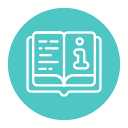Clarity and Tone: Encyclopedic Yet Approachable
Prefer short sentences, concrete nouns, and active voice. Introduce technical terms only when necessary, defining them in context and linking to glossary entries so readers never feel stranded or patronized.
Clarity and Tone: Encyclopedic Yet Approachable
Present competing methods fairly, citing evidence for each. Avoid promotional language, predictions, or speculative claims. Encyclopedic neutrality builds trust, especially when tutorials compare tools, frameworks, or historical interpretations.



